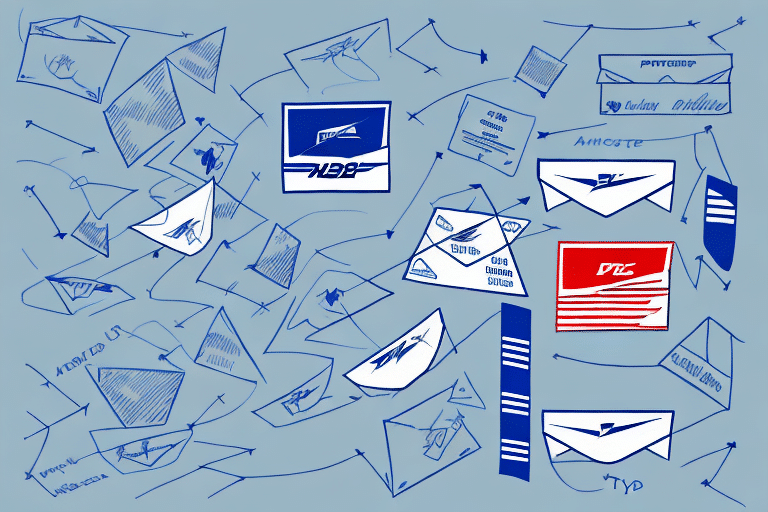Understanding USPS Tracking
In today's digital age, USPS Tracking is an essential tool for both senders and recipients of packages. Offered by the United States Postal Service (USPS), this service allows you to monitor your package's journey from the moment it is dispatched until it arrives at its destination. With over 600 million packages shipped annually through USPS, tracking provides a layer of transparency and assurance in the shipping process.
Types of USPS Tracking Services
USPS offers a variety of tracking services tailored to different shipping needs and budgets. Understanding these options can help you choose the best service for your requirements:
- Priority Mail: Provides delivery in 1-3 business days with tracking included.
- First-Class Package Service: Ideal for lightweight packages, offering tracking with delivery typically in 1-3 days.
- Priority Mail Express: Offers overnight delivery to most U.S. locations, with tracking and a money-back guarantee.
- Media Mail: Cost-effective for shipping educational materials, books, and media with tracking available.
Each service comes with its own set of features and pricing structures, allowing you to select the option that best fits your shipping needs. For a comprehensive overview, visit the USPS Priority Mail page.
Benefits of Using USPS Tracking
Utilizing USPS Tracking offers numerous advantages, enhancing both sender and recipient experiences:
- Real-Time Updates: Stay informed about your package's location and estimated delivery time, reducing uncertainty.
- Increased Security: Tracking minimizes the risk of lost packages and provides evidence of delivery.
- Delivery Confirmation: Receive confirmation once your package has been delivered, enhancing business credibility.
- Efficient Problem Resolution: Quickly identify and address any shipping delays or issues.
According to the USPS Data and Marketing Manager report, packages with tracking have a higher rate of on-time delivery and customer satisfaction.
How to Use USPS Tracking
Step-by-Step Guide
Implementing USPS Tracking for your packages is straightforward. Follow these steps to ensure accurate tracking and delivery:
- Obtain a Tracking Number: When you ship a package using a trackable service like Priority Mail, you'll receive a unique tracking number.
- Access the USPS Tracking Portal: Visit the USPS Tracking website and enter your tracking number in the designated field.
- Monitor Package Status: Receive real-time updates on your package's location, transit progress, and delivery status.
- Set Up Notifications: Opt-in for email or text alerts to stay informed about significant status changes.
For a more mobile-friendly experience, consider downloading the USPS Mobile App, which provides on-the-go tracking capabilities.
Common USPS Tracking Status Meanings
Understanding Key Tracking Indicators
Deciphering USPS tracking statuses is crucial for accurately gauging your package's progress. Here's an overview of the most common tracking statuses:
In Transit
The "In Transit" status indicates that your package is actively moving through the USPS network toward its destination. It has been processed at a USPS facility and is en route to the next location.
Out for Delivery
"Out for Delivery" signifies that your package is on the delivery vehicle and is scheduled to be delivered to the recipient's address that day.
Delivered
The "Delivered" status confirms that your package has been successfully delivered to the specified address. You may receive a notification via email or text, depending on your settings.
Exception
An "Exception" status occurs when there's an unexpected delay or issue in the delivery process, such as weather disruptions or incorrect address information. It's advisable to check the status regularly and contact USPS if the delay persists.
Advanced Tracking Features
USPS Tracking also offers advanced features like:
- Signature Confirmation: Requires a recipient's signature upon delivery, providing proof of receipt.
- Registered Mail: Offers an added layer of security and tracking for valuable items.
Troubleshooting Common USPS Tracking Issues
While USPS Tracking is generally reliable, you might encounter some common issues. Here's how to resolve them:
- Tracking Information Not Updated: Wait a few hours and refresh the tracking page. Sometimes, updates are not instantaneous.
- Package Marked as Delivered but Not Received: Check with neighbors or household members. If still unresolved, contact USPS Customer Service.
- Tracking Number Not Recognized: Ensure that you've entered the correct tracking number. If the problem persists, reach out to USPS support.
Tips for Successful Package Delivery with USPS Tracking
Maximize the efficiency and reliability of your package deliveries with these best practices:
- Double-Check Recipient's Address: Ensure that the recipient's address is accurate and complete to prevent delivery delays.
- Use Sturdy Packaging: Protect your items by using appropriate packaging materials to withstand transit conditions.
- Purchase Insurance: For valuable or fragile items, purchasing insurance provides financial protection in case of loss or damage.
- Opt for Signature Confirmation: Requiring a signature upon delivery adds an extra layer of security.
- Keep Tracking Number Accessible: Retain your tracking number for reference and easier access to tracking information.
Alternatives to USPS Tracking for Package Delivery
If USPS Tracking doesn't align with your shipping requirements, consider these reputable alternatives:
- FedEx: Offers a range of tracking options and expedited shipping services with reliable delivery times. For more information, visit FedEx Tracking.
- UPS: Provides detailed tracking and assurance through its extensive logistics network. Explore UPS services at UPS Tracking.
- DHL: Specializes in international shipping with comprehensive tracking features. Learn more at DHL Tracking.
Each of these carriers offers unique advantages, so evaluate their services to determine the best fit for your shipping needs.
Conclusion
USPS Tracking is a powerful tool that provides transparency and assurance in the shipping process. By understanding different tracking services, interpreting status updates, and implementing best practices, both senders and recipients can enhance their shipping experience. Whether you're shipping domestically or internationally, leveraging tracking services ensures that your packages are monitored every step of the way, minimizing the risk of loss or delays and maximizing satisfaction for all parties involved.






















